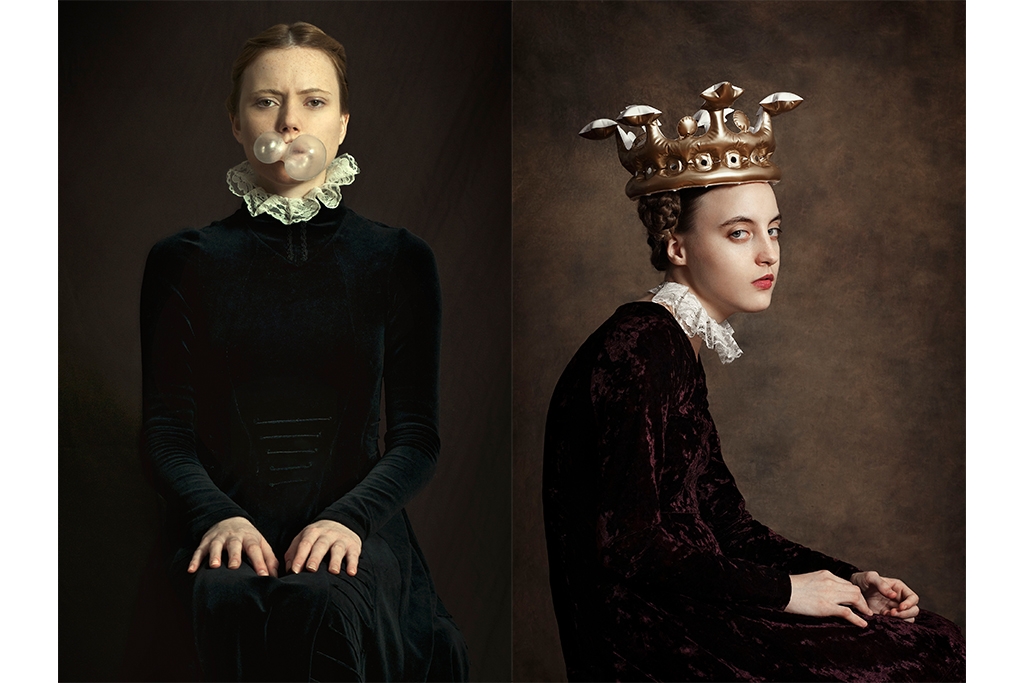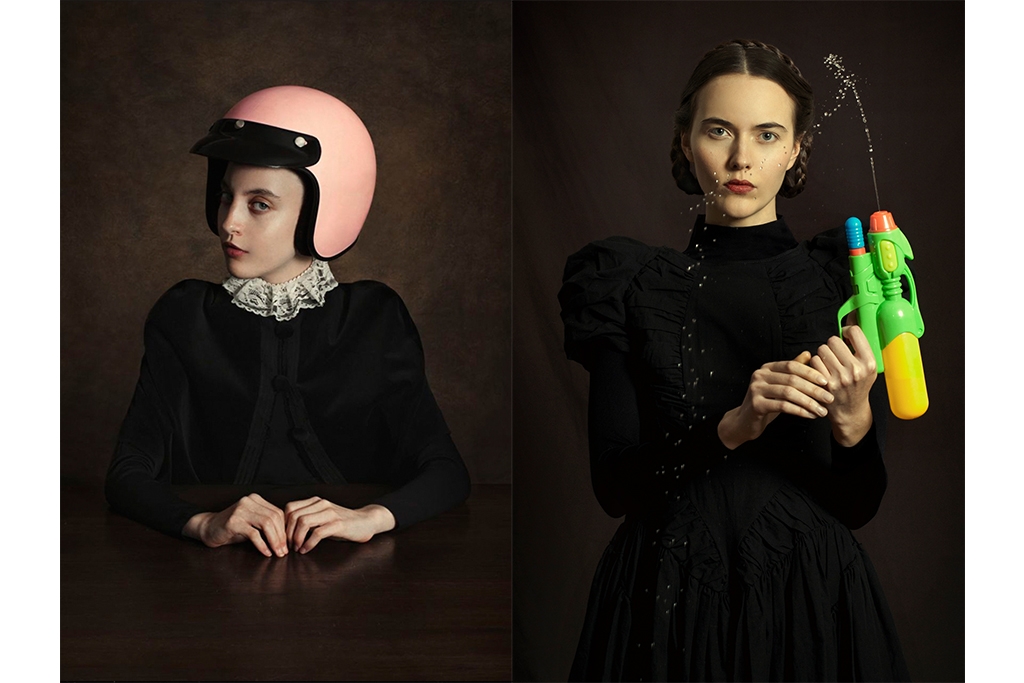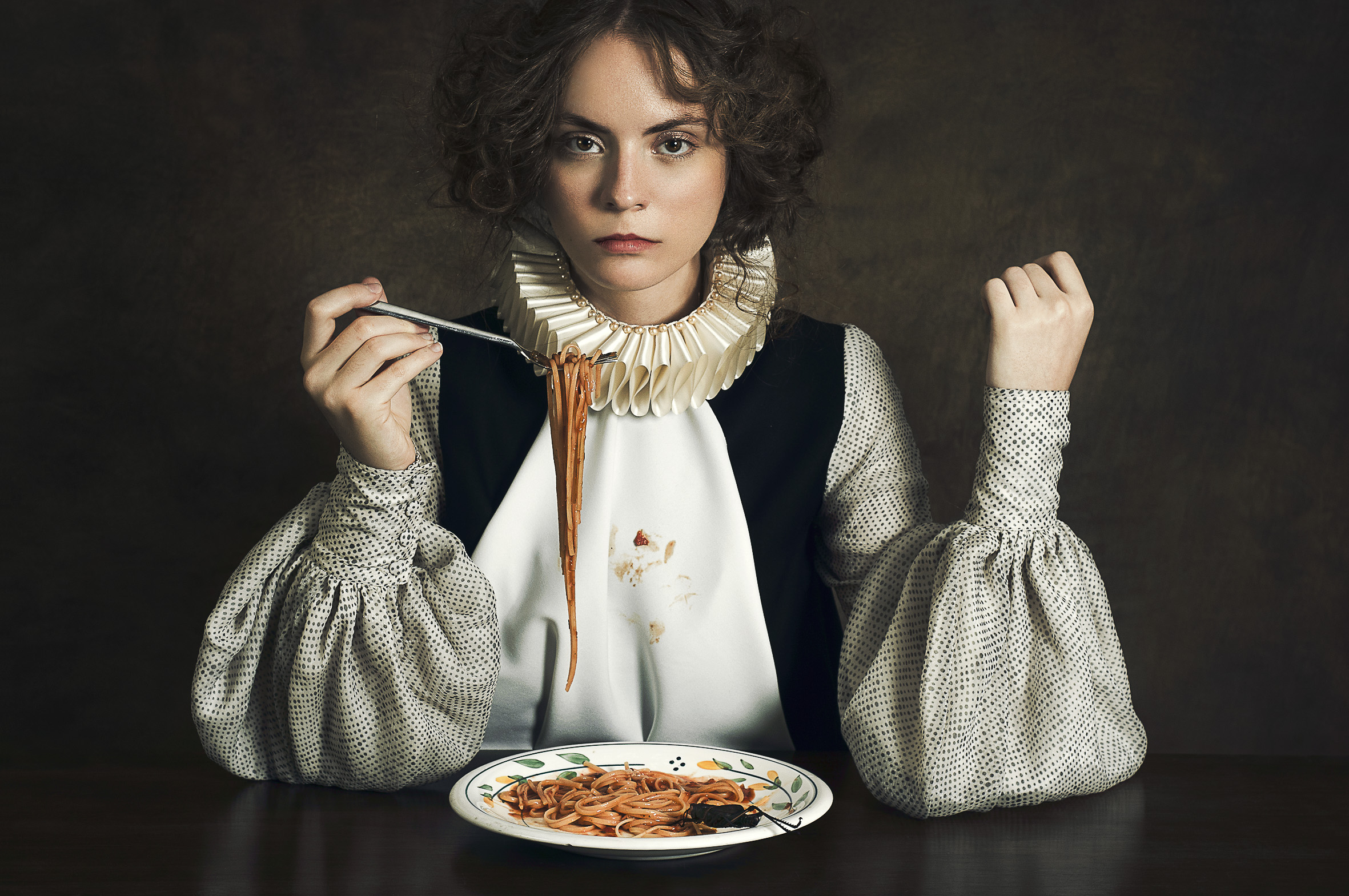Interview with Fine Art Photographer Romina Ressia
Focussing her lens on the role of women through the ages
This post may contain affiliate links. Learn more
The Argentinian photographer, Romina Ressia, who was named Photographer of the Year by the International Colour Awards in 2017, this week celebrates her first solo exhibition in England at HOFA Gallery.
Renowned for her absurd anachronisms, this exhibition, entitled the Age of Decadence, features original works from her critically-acclaimed series How Would Have Been? alongside new additions that will be unveiled for the first time.
By forcing contrasting eras into a single image, Ressia’s artistic assault on humanity is multi-pronged and wielded across the ages: the past, present, and – implied by the auxiliary verb in the collection’s title – future. The portraits capture a time vortex, pinpointing the susceptibility of human society throughout the ages, and perhaps even asserting its guilt. The Age of Decadence is as much, if not more, a castigation as it is a celebration of society.

‘Double Bubble Gum’ and ‘Crown’, 2018 © Romina Ressia
Featuring female models and an array of modern props, the collection is a performance that demands your attention while the expressions of the models simultaneously defy your gaze. In an attempt to understand the juxtapositions at the centre of the collection, we spoke to Ressia herself.
What was the starting point for How Would Have Been?
RR: ‘Pop-Corn’ and ‘Bubble Gum’ were the first in the series. They were shot in 2013. As a whole, the collection showcases my own observations on contemporary society and its evolution through the centuries. I like to see how people act when confronted with certain issues and how these reactions have affected us as a society.

‘Girl Wearing A Helmet’ and ‘Woman With A Water Pistol’, 2018
Why has fashion from the Renaissance period inspired your work more than any other?
RR: I use the Renaissance period as a reference from which to analyse evolution and to compare people’s behaviour. This is why my work echoes the classical style – not because the fashion inspires me particularly. I do, however, take several aspects from the period, and clothes is one of them, but not all and not the main thing.

‘Spaghetti’, 2018 © Romina Ressia
In almost all of the photographs the models are not smiling. To me, their expressions dare the viewer to comment or criticise– they are defiant. How do you capture such a specific expression?
RR: I have an image on my mind of what I want to create and that is the only thing I look for when shooting; to be able to put into life and capture on the camera what before has only existed as an abstract idea. I never pretend that my work can make viewers feel or think any specific thing. In fact, I don’t think of the viewer at all when I create my photographs. I just think of the images I have imagined in my head. And once you know exactly what you want, it is easy to make the model to do it right.
The objects in the photographs often dominate the images. How do you decide which to use?
RR: I use contemporary objects that are familiar to us nowadays. Even when some objects have a stronger or additional meaning, the deep idea is the same and this connects the whole series.

‘Birthday Cake’ and ‘Blue Dog Balloon’, 2018 © Romina Ressia
Many of the objects – the balloon animal, the spaghetti, the water pistol, the bubblebgum – are playful. This creates a disconcerting contrast with the sombre, laced-up model. As well as a nod towards how far gender relations have come, does this also convey the disconnect between how people perceive women, and how they actually act?
RR: It is an interesting point of view. Of course, the woman role is very present in the project.
…perhaps I got a bit carried away there.
Regardless, the biting tone and accusingly coy glances of Ressia’s photographs will undoubtedly challenge you and take some time to size up. Whether you end up reassessing your opinions on photography, femininity, modernity or fashion, you will leave the exhibition having gained a fresh perspective. And that is why it’s unmissable.
The Age of Decadence is on at HOFA Gallery, Mayfair from 5 June until 19 June.
READ MORE: Interview with Seascape Artist Elaine Jones
